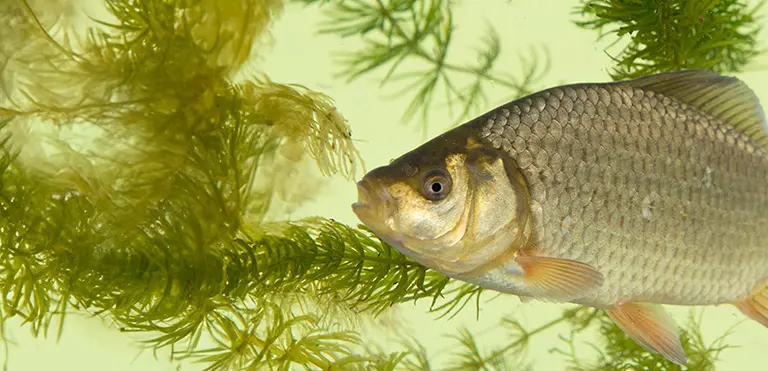
Will Watson / naturepl

Will Watson / naturepl
Up to 10 years
15 - 30cm
Thought to be native (under debate); Listed on the IUCN Red List of Threatened Species.
Similar in shape and colouration to its goldfish relatives. this gold-coloured, elusive species is found in small ponds, lakes, canals and slow-flowing , inland rivers. The small shoals tend to avoid water systems with high boat traffic and can tolerate poor conditions including cold, polluted and low-oxygen waters.
Although debated as to its native status, crucian carp are well established in the UK biota and are not known to have had a detrimental impact on native wildlife. As they preferentially prefer macrophyte-rich habitats, the monitoring of the species can be of interest to those looking to monitor these key conservation habitats.
Populations are threatened by direct competition with feral goldfish (Carassius auratus) and common carp (Cyprinus carpio) as well as hybridisation being recorded between all 3 species. In Europe, gibel carp (Carassius gibelio) are rapidly spreading and since 2020, it has been recorded in the UK at 7 locations; females eggs can be fertilised by other carp species, increasing their dispersal rate. This species has the potential to outcompete and hybridise with crucian carp.
Can be surveyed all-year-round. Optimal survey period would be during spawning months (March-June).